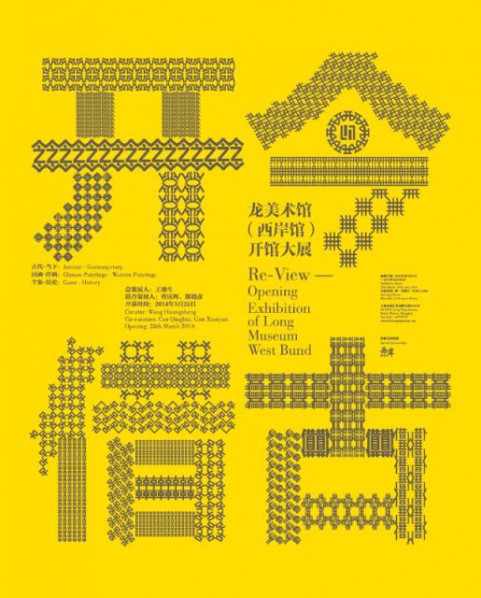
The end of the year 2012 witnessed the opening of Long Museum Pudong, inaugurated with its opening exhibition “Through All Ages”. On March 28th, 2014, Long Museum West Bund will be officially open to the public, thereby establishing a unique ecosystem of art – “One City, Two Museums.”
For the opening exhibition, Long Museum has invited Mr. Wang Huangsheng to be the chief curator and Cao Qinghui and Guo Xiaoyan as co-curators. Taking the lineages in art history as the thread and leveraging the features of Long Museum collection, we proudly present “Re-View: Opening Exhibition of Long Museum West Bund” in three sections: “Ancient / Contemporary,” “Chinese Paintings / Western Paintings,” and “Cases / History.” The exhibition will show more than 300 artworks by over 200 artists, covering contemporary, modern, and traditional Chinese art.
Contemporary art refers to the art of the “current” age. How contemporary art converses with, extends, and transcends ancient art and the past becomes the entry point of the opening exhibition and the layout of Long Museum West Bund. As an old saying goes, “we shall usher in the current times by deriving from our ancient heritage” (jiegukaijin): to create new ideas based on old traditions. But our starting point is to create, explore, and experiment at the very present times, as we shall relate to, converse with, challenge, and surpass history. The exhibition tries to narrate “history” and expound “views” by creating a structure of contrasts: stating “views” with “history” as the thread and integrating “views” into “history.” We take the exhibition as an opportunity to offer a perspective for interpreting the art history that exists and is taking place, as well as a context in which the status quo and the future of contemporary art can be reviewed (Quotes by Wang Huangsheng).
Ancient / Contemporary
This section is curated by Wang Huangsheng. It consists of three sub-sections: “Converse with Delight,” “Interpret the Subtlety,” and “Observe in Silence.” “Contemporary” is a cultural concept, a vision and expression from the standpoint of “today.” In this section, the exhibition will allow us to wander through the feelings and sentiments of the ancient people in contemporary reference and display. While we wish to introduce new interpretations of history by contemporary cultural thought and artistic representation to forge a dialogue between ancient and contemporary times, we value the gist and peculiarities of the classics, and emphasize contemplation, with which to “grasp the spiritual essence of art.” It will be an intellectual odyssey for the visitors to connect the ancient and contemporary times by reflection and review.
What is worth mentioning in particular is that the Su Shi work A Farewell Letter to Gongfu (The Go Fu Tie Calligraphy) which has aroused wide concern recently will be present to the viewers in a special exhibition of Documenta.
Chinese Paintings / Western Paintings
The curator of this section is Cao Qinghui. Based on the rich collection of modern art of Long Museum, the exhibition provides a perspective on juxtaposition and comparison of works, first-person and third-person narrations, as well as awareness of and reflection on cultures. Through the structure and relationship of the three thematic modules, “Mimic the Landscape vs. Create the Realm,” “Portray the Appearance vs. Create the Image,” and “Describe the Object vs. Describe via the Object,” the section explores the cultural identity and art history of China and the West in the transitional period of the contemporary and modern times.
Cases / History
The “Cases / History” section curated by Guo Xiaoyan stresses and highlights the relationship between cases and history. Cases are the elements of and foundation for history. A series of cases constitute relevant historical events and their expression, while cases themselves are part of the history that is happening and developing.
About the exhibition
Duration: Mar 29, 2014 - Jun 30, 2014
Opening: Mar 28, 2014, 17:00, Friday
Venue: Long Museum (West Bund)
Courtesy of Long Museum (West Bund).




























